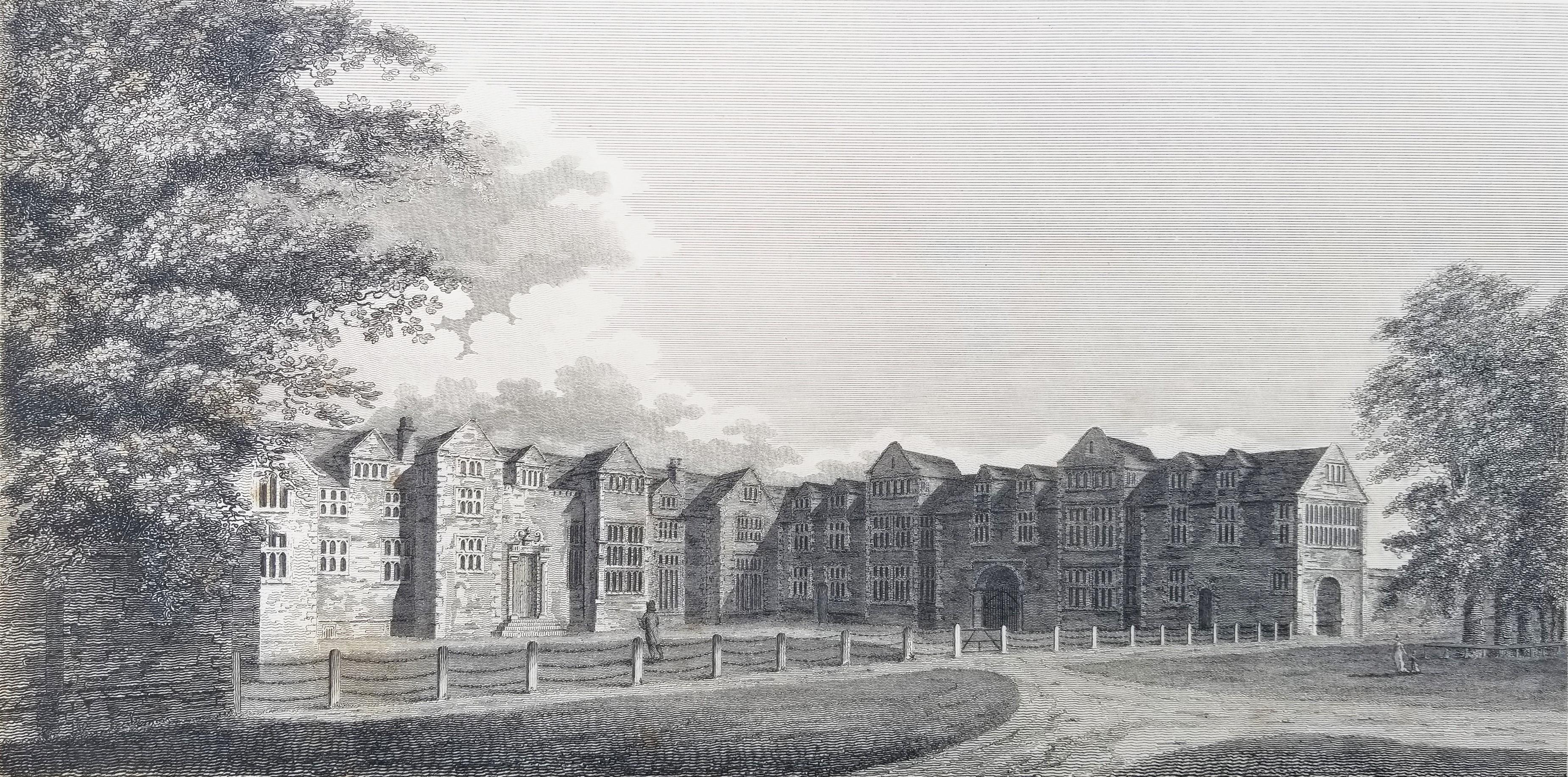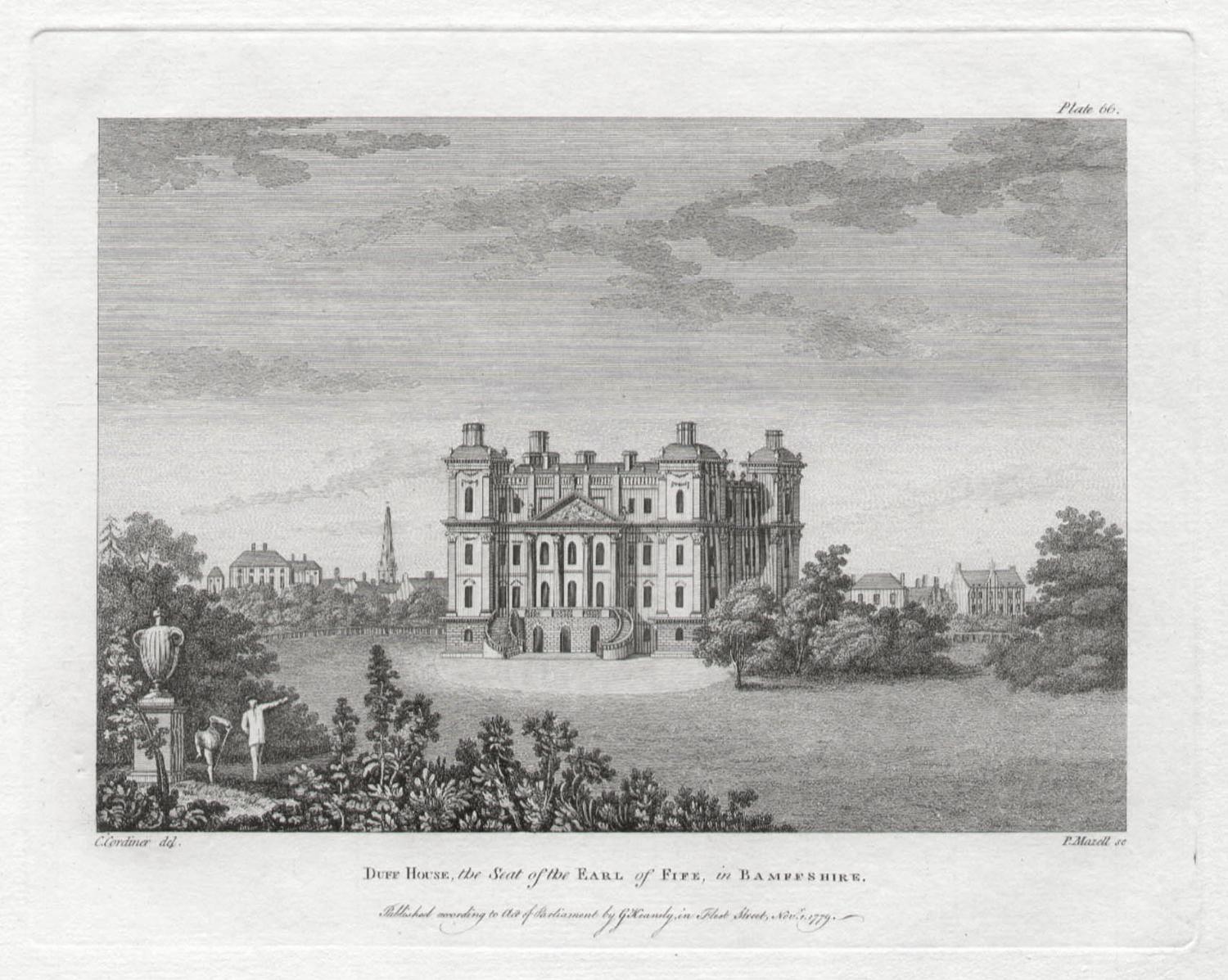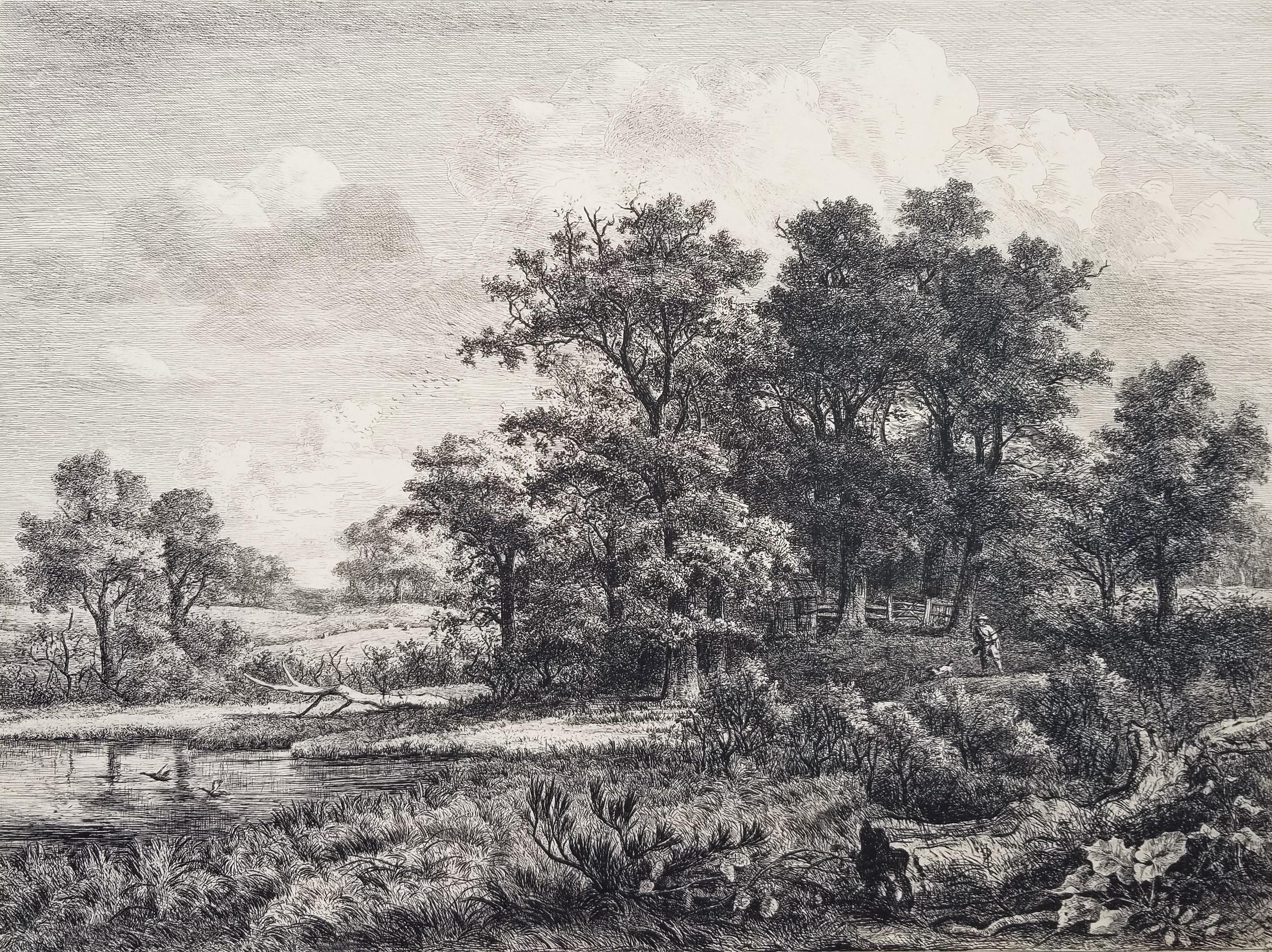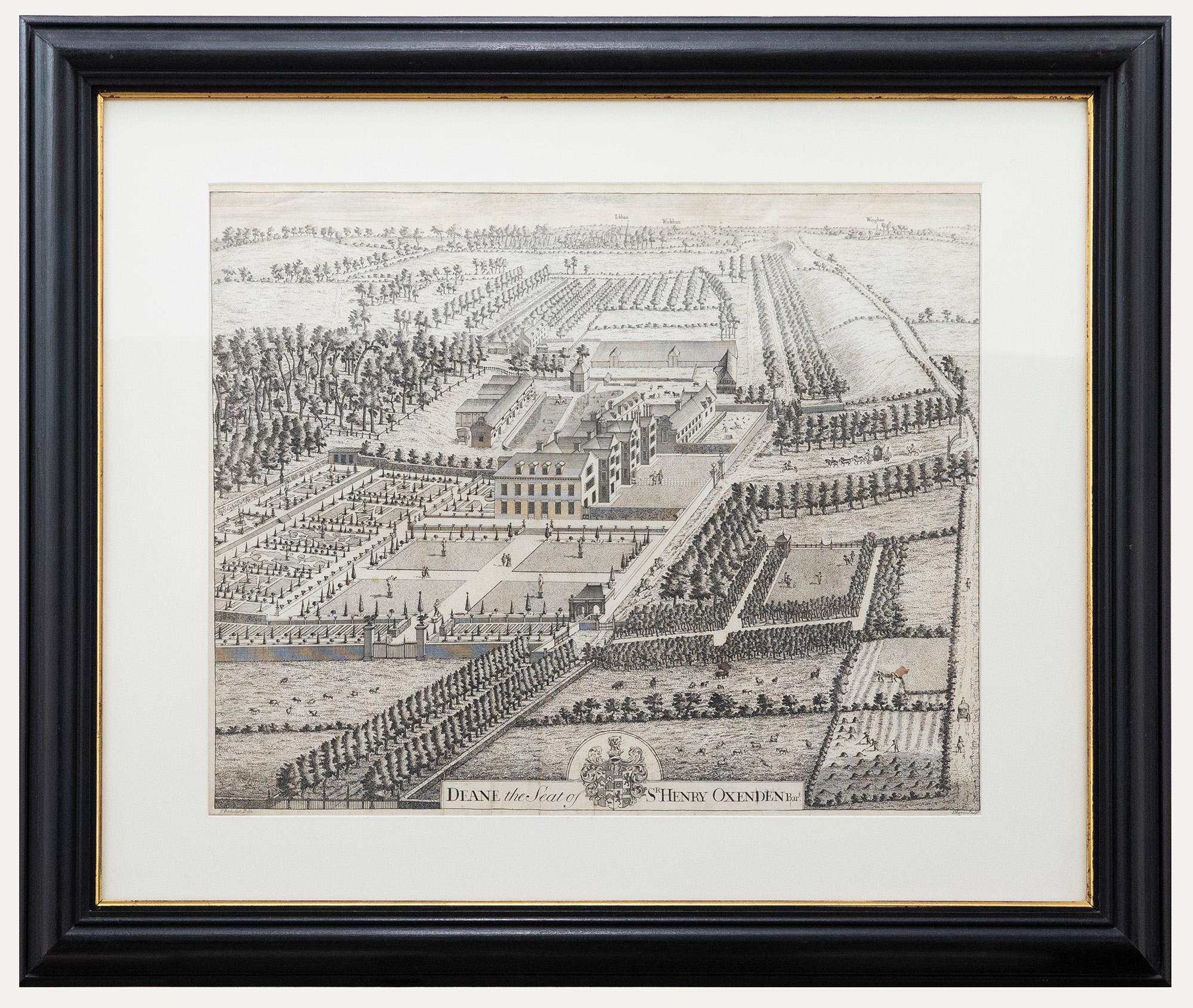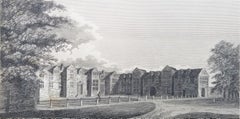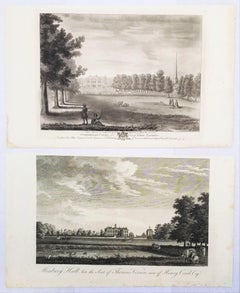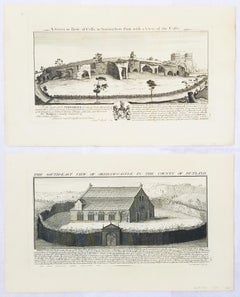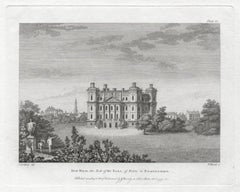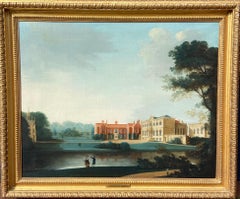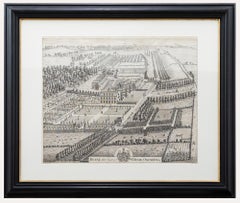Items Similar to Came, the Seat of the Hon. Lionel Damer /// Dorsetshire John Hutchins English
Want more images or videos?
Request additional images or videos from the seller
1 of 15
John HutchinsCame, the Seat of the Hon. Lionel Damer /// Dorsetshire John Hutchins English1796-1815
1796-1815
$250
£187.93
€217.88
CA$349.04
A$390.94
CHF 203.42
MX$4,747.96
NOK 2,578.85
SEK 2,433.34
DKK 1,625.66
Shipping
Retrieving quote...The 1stDibs Promise:
Authenticity Guarantee,
Money-Back Guarantee,
24-Hour Cancellation
About the Item
Artist: John Hutchins (English, 1698-1773)
Title: "Came, the Seat of the Hon. Lionel Damer" (Plate 48)
Portfolio: The History and Antiquities of the County of Dorset
Year: 1796-1815 (Second edition)
Medium: Original Engraving on wove paper
Limited edition: Unknown
Printer: John Bowyer Nichols, London, UK
Publisher: Richard Gough and John Bowyer Nichols, London, UK
Reference: Brunet III, No. 389; Upcott I, No. 48, page 183
Sheet size: 9.19" x 15.5"
Image size: 7.19" x 11.88"
Condition: Some light foxmarks lower right in image and margins. Has been professionally stored away for decades. It is otherwise a strong impression in excellent condition
Notes:
Provenance: private collection - Aspen, CO. Engraved by English John Emes (1762-1810) after a drawing by English artist John Laporte (1761-1839). Comes from Hutchins' four volume "The History and Antiquities of the County of Dorset", (1796-1815) (Second edition), which consists of approx. 180 engravings. Printed from one copper plate in one color: black. John Hutchins' "The History and Antiquities of the County of Dorset" was originally published in 1774 (First edition) in a limited edition of 600, 1796-1815 (Second edition), and lastly 1861-1870) (Third edition).
Came House is a privately owned country house next to the village of Winterborne Came, in Dorset, England. Built in the mid-18th century, it is a Grade I listed building. The house was built for John Damer by Francis Cartwright of Blandford in 1754; after Cartwright's death in 1758 the interior was completed by Vile and Cobb, cabinet makers of London, in 1762. There is a kitchen wing on the east, connected to the house by a passageway. In the mid-19th century an entrance with porch, vestibule and cloakrooms, and a cast-iron domed conservatory, were added on the west side of the house. The conservatory is attributed to the architect Charles Fowler. A library was also established at that time and other minor changes were made. There have otherwise been few alterations.
Biography:
John Hutchins (1698–1773) was a Church of England clergyman and English topographer, who is best known as a county historian of Dorset. John Hutchins was born at Bradford Peverell, Dorset, on 21 September 1698. He was the son of Richard Hutchins (died 1734), who was for many years curate there, and from 1693 rector of All Saints Church, Dorchester. His mother, Anne, died on 9 April 1707, and was buried in Bradford Peverell church. His early education was under the Rev. William Thornton, master of Dorchester Grammar School, and on 30 May 1718 he matriculated at Hart Hall, Oxford. In the next spring (10 April) he migrated to Balliol College, and graduated B.A. on 18 January 1722, but for some unknown reason became M.A. from Magdalene College, Cambridge, in 1730.
Late in 1722 or early in 1723 he was ordained, and served as curate and usher to George Marsh, who from 1699 to 1737 was vicar of Milton Abbas and the master of its grammar school. In his native county Hutchins remained for the rest of his life. Through the interest of Jacob Bancks of Milton, he was instituted to the rectory of Swyre (Holy Trinity) on 22 August, and to that of Melcombe Horsey in 1733. He became rector of Holy Trinity, Wareham, on 8 March 1744, but he retained the cures of Swyre and Wareham until his death. Political agitation among his parishioners at Wareham involved him in difficulties, and his weak voice and growing deafness diminished his influence in the pulpit.
On Sunday, 25 July 1762, when the town of Wareham was devastated by fire and his rectory-house was burnt to ashes, his topographical papers were rescued by Mrs. Hutchins at the risk of her life. At the end of his days Hutchins was seized by a paralytic stroke, but he still laboured at his history of Dorset.
On 21 June 1773 Hutchins died, and was buried in the church of St. Mary's, Wareham, in the old chapel under its south aisle. A monument on the north wall of the church commemorated his memory. An engraving by John Collimore of a portrait of Hutchins by Cantlo Bestland appeared in Peregrine Bingham's "Memoir" (1813). Hutchins' library was sold by Thomas Payne in 1774.
- Creator:John Hutchins (1698 - 1773, English)
- Creation Year:1796-1815
- Dimensions:Height: 9.19 in (23.35 cm)Width: 15.5 in (39.37 cm)
- Medium:
- Movement & Style:
- Period:1790-1799
- Condition:
- Gallery Location:Saint Augustine, FL
- Reference Number:1stDibs: LU121214759032
About the Seller
5.0
Platinum Seller
Premium sellers with a 4.7+ rating and 24-hour response times
Established in 1978
1stDibs seller since 2015
1,325 sales on 1stDibs
Typical response time: <1 hour
- ShippingRetrieving quote...Shipping from: Saint Augustine, FL
- Return Policy
Authenticity Guarantee
In the unlikely event there’s an issue with an item’s authenticity, contact us within 1 year for a full refund. DetailsMoney-Back Guarantee
If your item is not as described, is damaged in transit, or does not arrive, contact us within 7 days for a full refund. Details24-Hour Cancellation
You have a 24-hour grace period in which to reconsider your purchase, with no questions asked.Vetted Professional Sellers
Our world-class sellers must adhere to strict standards for service and quality, maintaining the integrity of our listings.Price-Match Guarantee
If you find that a seller listed the same item for a lower price elsewhere, we’ll match it.Trusted Global Delivery
Our best-in-class carrier network provides specialized shipping options worldwide, including custom delivery.More From This Seller
View AllLoseley House, The Seat of James More Molyneux Esq. /// English Landscape Surrey
Located in Saint Augustine, FL
Artist: Owen Manning (English, 1721-1801)
Title: "Loseley House, The Seat of James More Molyneux Esq."
Portfolio: The History and Antiquities of the County of Surrey
Year: 1804-1814 ...
Category
Early 1800s Victorian Landscape Prints
Materials
Engraving
Near Stoneleigh, Warwickshire /// British Victorian Landscape Etching Black Art
Located in Saint Augustine, FL
Artist: Jacob George Strutt (English, 1784-1867)
Title: "Near Stoneleigh, Warwickshire"
Portfolio: Deliciae Sylvarum or Grand and Romantic Forest Scenery in England and Scotland
*Monogram signed by Strutt in the plate (printed signature) lower right
Year: 1828
Medium: Original Etching on chine appliqué on heavy wove paper
Limited edition: Unknown
Printer: Unknown
Publisher: Jacob George Strutt, London, UK
Sheet size: 14.25" x 21.13"
Image size: 10.38" x 13.94"
Condition: Minor soiling and discoloration in margins. A few light areas of waterstaining at right and bottom edges in margins. It is otherwise a strong impression in very good condition
Very rare
Notes:
There is an example of this work within the permanent collection of the British Museum, London, UK and the National Gallery of Ireland, Dublin, Ireland.
Biography:
Jacob George Strutt (4 August 1784 – 1867) was a British portrait and landscape painter and engraver in the manner of John Constable. He was the husband of the writer Elizabeth Strutt, and father of the painter, traveller and archaeologist Arthur John Strutt...
Category
1820s Victorian Landscape Prints
Materials
Etching, Intaglio
Set of Two Engravings from Nash's "History of Worcestershire" /// Landscapes Art
By Treadway Russell Nash
Located in Saint Augustine, FL
Artist: Treadway Russell Nash (English, 1724-1811)
Title: "Henbury Hall, late the Seat of Thomas Vernon, now of Henry Cecil Esq." and "Ombersley Court, the Seat of Lord Sandys"
Portfolio: Collections for the History of Worcestershire
Year: 1781-1782 (First edition)
Medium: Set of Two Original Engravings and Etching with Aquatint on watermarked laid paper
Limited edition: Unknown
Printer: John Nichols, London, UK
Publisher: T. Payne and Son, J. Robson, B. White, Leigh and Sotheby, London, UK; Fletcher, Oxford, UK; and Lewis, Worcester, UK
Reference: Upcott III, page 1330
Sheet size (each): approx. 10.13" x 16.88"
Image size (each): approx. 8.13" x 12.63"
Condition: "Henbury Hall, late the Seat of Thomas Vernon, now of Henry Cecil Esq." has scattered light foxmarks in margins. The top edge is unevenly trimmed and a small taped tear to lower right corner. "Ombersley Court, the Seat of Lord Sandys" has light toning to sheet and some faint discoloration in right margin. A small light water stain to lower left corner. Have been professionally stored away for decades. They are both otherwise strong impressions in good condition
Notes:
Provenance: private collection - Aspen, CO. "Henbury Hall, late the Seat of Thomas Vernon, now of Henry Cecil Esq." was likely engraved by English artist James Ross (1745-1821) after a drawing by himself. "Ombersley Court, the Seat of Lord Sandys" was engraved by English artist Valentine Green (1739-1813) and English artist Francis Jukes (1745-1812) after a drawing by an unknown, likely English artist. The first work is an engraving; the second work is an etching with aquatint. Comes from Nash's two volume "Collections for the History of Worcestershire", (1781-1782) (First edition), which consists of 75 engravings. Each work is printed from copper plates in one color: black. There was a (Second edition) "with Additions" bound in with Volume II of this portfolio published by John White in (1799). And both the First and Second editions of "Collections for the History of Worcestershire" are based off Thomas Sanders' 1779-1781 "Perspective Views of the Market Towns within the County of Worcester". "Ombersley Court, the Seat of Lord Sandys" has an unidentified watermark in the center of its sheet. "Henbury Hall" is actually incorrectly misnamed; its correct name is "Hanbury Hall".
"PLATES, Drawn and engraved by J. Ross, unless otherwise expressed." - "A Bibliographical Account of the Principal Works Relating to English Topography", (1818) - William Upcott.
Biography:
Treadway Russell Nash (24 June 1724 – 26 January 1811) was an English clergyman, now known as an early historian of Worcestershire and the author of Collections for the History of Worcestershire, an important source document for Worcestershire county histories. He was a fellow of the Society of Antiquaries of London.
Treadway Russell Nash was born on 24 June 1724 born at Clerkenleap, in Kempsey, Worcestershire. His family were from Ombersley. They had lands there and at Claines, and had later bought lands in the Reformation around St Peter's, Droitwich. He was related to James Nash and John Nash, both MPs for Worcester. His father Richard, a grandson of Sir Rowland Berkeley, died in 1740, and Richard's eldest son in 1757. As a result, Treadway Russell Nash inherited the Russells' Strensham estates from his brother, as well as the Nash estates, and took both names.
He was educated from the age of twelve at King's School, Worcester, and became a scholar at Worcester College, Oxford aged fifteen. In March 1749, he accompanied his brother on a trip to the continent, to aid Richard's health. They visited Paris for about six weeks, before spending the summer "on the banks of the Loire". They then visited "Bourdeaux, Thoulouse, Montpelier, Marseilles, Leghorn, Florence, Rome, Naples, Bologna, Venice, Padua, Verona, Milan, Lyons, and again Paris"; such expeditions are often known as the Grand Tour.
On his return in late summer 1751, Nash took up a post as Vicar of Eynsham through his friend and future brother-in-law, John Martin. He also had an income as a tutor at Oxford. He took his Doctor of Divinity degree and left Oxford, having "gone out grand compounder", following the death of his brother. He also left his benefice at Eynsham in 1757. While at Oxford he had proposed a road from there to Witney (now the A40 and B4022), and also stood for Parliament. Nash married Margaret Martin...
Category
1780s Old Masters Landscape Prints
Materials
Laid Paper, Engraving, Intaglio, Etching, Aquatint
"Oakham Castle" and "Nottingham Park/Castle" from "Buck's Antiquities" /// UK
By Samuel & Nathaniel Buck
Located in Saint Augustine, FL
Artist: Samuel and Nathaniel Buck (English, 1696-1779) and (?-1759/1774)
Title: "Oakham Castle" (Plate 242) and "Nottingham Park/Castle" (Plate 226)
Portfolio: Buck's Antiquities or Venerable Remains of Above 400 Castles, Monasteries, Palaces in England and Wales
Year: 1726-1739
Medium: Set of Two Original Engravings on watermarked laid paper
Limited edition: Unknown
Printer: Unknown
Publisher: Robert Sayer, London, UK
Reference: Lowndes page 303-304; Upcott page 33
Sheet size (each): approx. 11" x 18.25"
Image size (platemark) (each): approx. 7.75" x 14.75"
Condition: "Nottingham Park" has light soiling in margins and scattered light foxmarks across sheet. They are both otherwise strong impressions in very good condition
Notes:
Comes from Samuel and Nathaniel Buck's three volume portfolio "Buck's Antiquities" or "Venerable Remains of Above 400 Castles, Monasteries, Palaces in England and Wales" (1726-1739), which consists of 428 engravings. Both "Oakham Castle" and "Nottingham Park/Castle" have unidentified watermarks in the center of their sheets. They both also have "Liverpool Free Public Library" chop mark/blind stamps at bottom center of their sheets. Old price pencil inscribed in margins.
Oakham Castle is a historic building in Oakham, Rutland. The castle is known for its collection of massive horseshoes and is also recognised as one of the best examples of domestic Norman architecture in England. It is a Grade I listed building. Owned and managed by the Rutland County Council, Oakham Castle is licensed for civil...
Category
1720s Old Masters Landscape Prints
Materials
Laid Paper, Engraving, Intaglio
Cottage in the Forest of Arden /// British Victorian Landscape Cottage Etching
Located in Saint Augustine, FL
Artist: Jacob George Strutt (English, 1784-1867)
Title: "Cottage in the Forest of Arden"
Portfolio: Deliciae Sylvarum or Grand and Romantic Forest Scenery in England and Scotland
Year: 1829
Medium: Original Etching on chine appliqué on heavy wove paper
Limited edition: Unknown
Printer: Unknown
Publisher: Jacob George Strutt, London, UK
Sheet size: 14.07" x 21.13"
Image size: 9.63" x 13.82"
Condition: Minor soiling and discoloration in margins. Light areas of waterstaining about sheet mainly in margins. It is otherwise a strong impression in very good condition
Very rare
Notes:
There is an example of this work within the permanent collection of the British Museum, London, UK and the National Gallery of Ireland, Dublin, Ireland.
Biography:
Jacob George Strutt (4 August 1784 – 1867) was a British portrait and landscape painter and engraver in the manner of John Constable. He was the husband of the writer Elizabeth Strutt, and father of the painter, traveller and archaeologist Arthur John Strutt...
Category
1820s Victorian Landscape Prints
Materials
Etching, Intaglio
Thorsby House in the County of Nottingham /// "Vitruvius Britannicus" Engraving
By Colen Campbell
Located in Saint Augustine, FL
Artist: Colen Campbell (Scottish, 1676-1729)
Title: "Thorsby House in the County of Nottingham" (Vol. 1, Plate 91)
Portfolio: Vitruvius Britannicus; or The British Architect, Contain...
Category
1710s Old Masters Landscape Prints
Materials
Laid Paper, Engraving, Etching, Intaglio
You May Also Like
Duff House, Bamffshire, Scotland. Cordinier C18th landscape engraving
Located in Melbourne, Victoria
‘Duff House, the Seat of the Earl of Fife, in Bamffshire’
Engraving by P Mazell After C Cordiner,
From Paul Sandby's 'The Virtuosi's Museum, Containing Select Views in England, Sco...
Category
18th Century Naturalistic Landscape Prints
Materials
Engraving
18th Century View of Bishopthorpe Palace Yorkshire
Located in London, GB
Nicholas Thomas Dall (1706-1776)
Bishopthorpe Palace Yorkshire
Oil on Canvas
24 1/4 X 30 1/4
Provenance: Christie's New York: Friday, October 4, 1996 [Lot 00095] Sold for $10,350
...
Category
Mid-18th Century Landscape Paintings
Materials
Oil
Attributed to John Chessell Buckler (1793-1894) - Watercolour, Stately Home
Located in Corsham, GB
A very finely painted mid 19th century English watercolour depicting figures before a stately home, excellently presented in a washline mount and modern gilt frame. We have attribute...
Category
19th Century Landscape Drawings and Watercolors
Materials
Watercolor
John Harris After Thomas Badeslade - 18th Century Engraving, Deane House
By John Harris (painter)
Located in Corsham, GB
A delightful bird's eye view of Deane House Kent, engraved by John Harris after an original drawing by British illustrator Thomas Badeslade. The engraving shows a detailed view of th...
Category
Early 18th Century Landscape Prints
Materials
Engraving
Bamborough (from the North West) - Lithograph By George Balmer - 19th Century
Located in Roma, IT
Bamborough (from the North West) is a lithograph artwork on paper realized by the artist George Balmer .
Signed on the plate on the lower left. Titled on the lower center. Engraved ...
Category
19th Century Modern Figurative Prints
Materials
Lithograph
Somerset Royal Palace View - Original Etching 18° Century
Located in Roma, IT
Somerset Royal Palace View is an original print realized by Anonymous artist at the end of XVIII century (about 1760).
Titled below "Vue du Palais Royal Somerset du côté de la Tamise" with the imprint "a Paris chez Daumont rue St Martin...
Category
Late 18th Century Figurative Prints
Materials
Etching
$223 Sale Price
25% Off
More Ways To Browse
Antique Conservatories
Antique Conservatory
Used Church Seats
Antique Kitchen Wall Art
Antique Porches
Vestibule Antique
George Iii Library
Antique Cast Iron Seat
Antique English Wall Cabinet
Antique Copper Wall Light
Holy Trinity
Trinity Plate
Old Hall 1790
Antique Porch Light
Antique Printer Cabinets
Antique Marsh Cabinets
Hart Iron
John Francis Marsh
